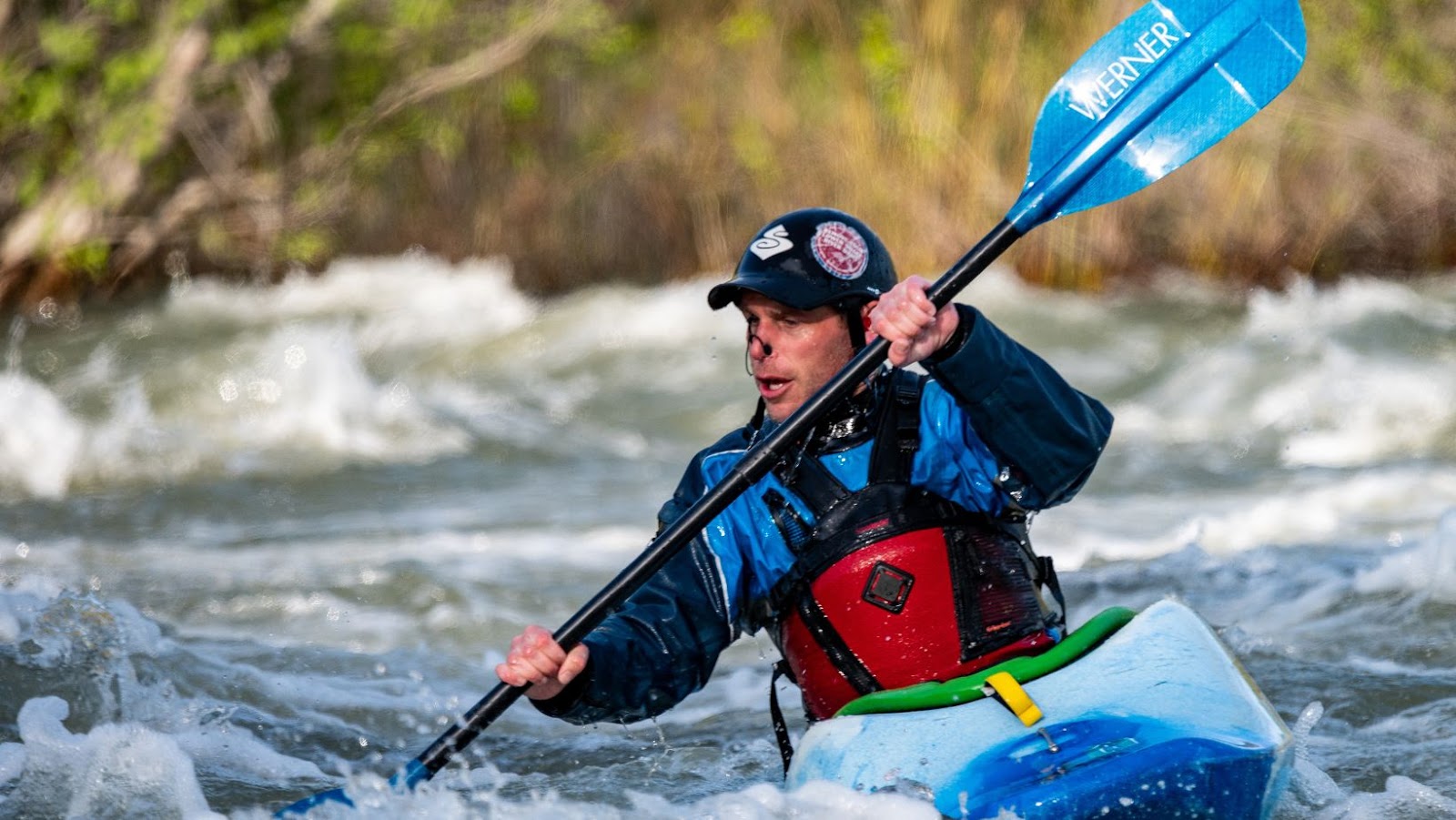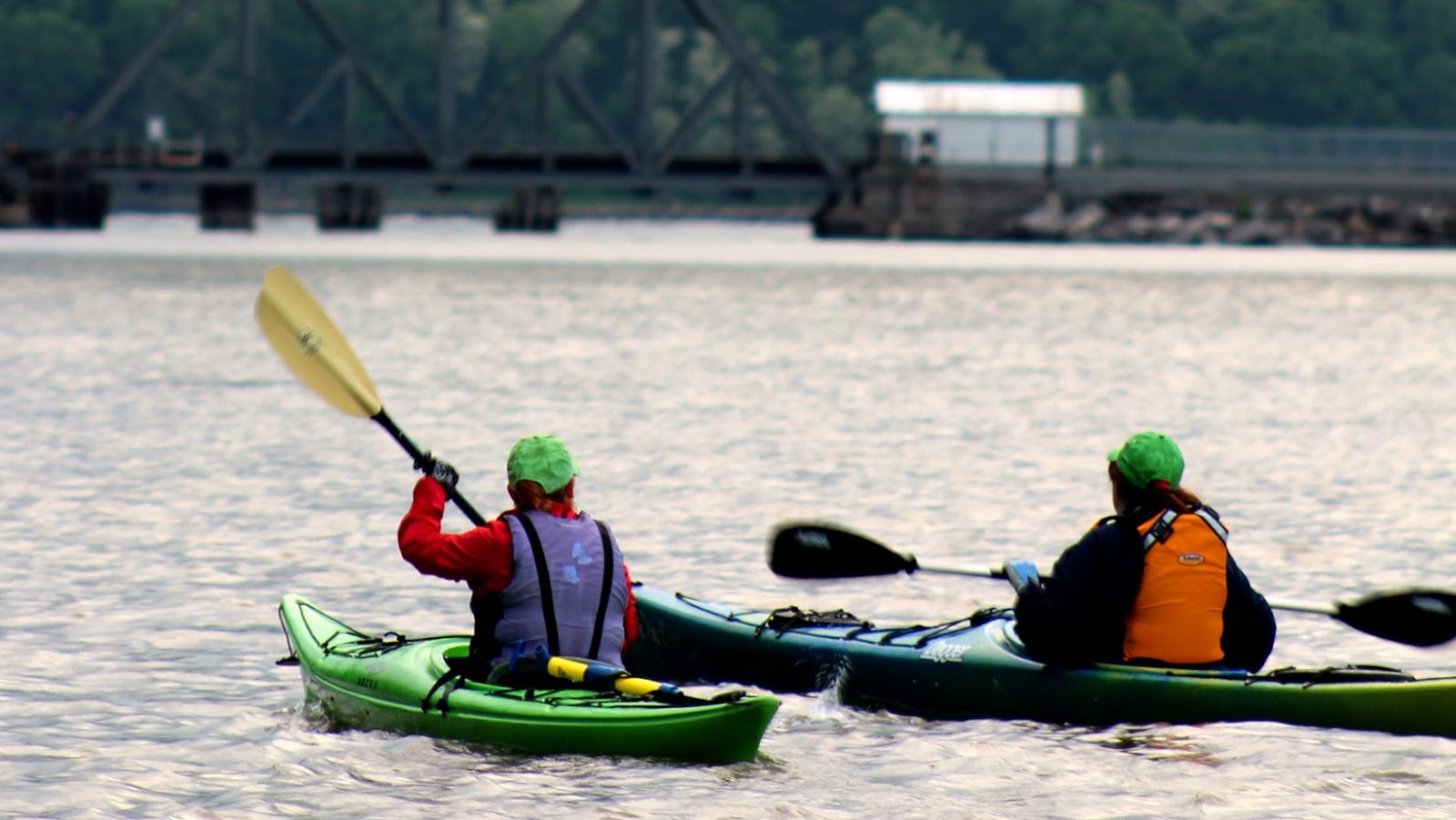Are you looking for an exciting way to get fit? Kayaking could be the perfect solution!
Not only is it a thrilling way to stay active, it also provides an array of health benefits. Discover why kayaking is an excellent form of exercise and how you can maximize its potential.
Is Kayaking a Good Workout
Kayaking is a low-impact exercise, yet it is an effective way to get in shape and stay fit. No matter what your fitness level or strength is, kayaking offers a great workout and the opportunity to build muscle, increase endurance and burn calories. With so many different types of kayaks on the market, it’s easy to find something suitable for your skill level, needs and budget.
Whether you’re looking to paddle with friends or family members or make it an individual pursuit, understanding the physical and psychological benefits of kayaking can help maximize your workout experience. In addition to giving you a full-body workout, kayaking provides mental stimulation which further boosts overall well-being. Kayaking also allows for some serenity — taking you away from the hustle and bustle of daily life.
Kayak workouts have many advantages to offer those seeking physical activity and exploration. From recreational paddling for relaxation purposes or springing into action for more dynamic forms of exercise such as whitewater rafting or surfing small waves — whatever type of activity you decide on — paddling away from shore will ensure that you can reap the rewards of kayaking while having fun along the way!
Benefits of Kayaking
Kayaking is a great outdoor activity that provides a range of physical and mental benefits. Kayaking is an excellent way to improve your physical fitness by strengthening your core, arms, shoulders, and legs. It also helps you develop balance and coordination as you paddle and maneuver your craft.
Kayaking improves cardiovascular health, increases endurance, and builds muscles in all parts of the body, including the back. Kayaking works multiple muscles at once, making it an especially effective workout for those seeking to build strength or improve their overall level of fitness.

Kayaking also increases flexibility as paddlers use their bodies to focus on the movement necessary to propel themselves forward in the water. The twisting motion combined with repetition helps increase muscle tone while improving flexibility. The upper and lower body work together in a coordinated motion that requires arms and legs to move together in sequence and synchronization.
Aside from the physical benefits of kayaking, it also provides numerous mental health benefits including stress relief and improved concentration levels due to the concentration required when paddling in order to be safe on the water. Kayaking can help boost self-confidence, as well as providing excellent opportunities for social interaction with other paddlers or nature enthusiasts while out on the water.
Types of Kayaking
Kayaking can be both relaxed and strenuous, depending on the type of kayaking you choose. There are several different styles of kayaking, each with its own level of difficulty and exercise benefits. Here is a breakdown of the main types of kayaking you can do:
Recreational Kayaking: Designed for easy going experiences, these kayaks are often wider, more stable and designed for flat water paddling. Those who are primarily interested in getting outside don’t need to buy the most expensive or elite models – wide recreational boats offer stability, comfort and enough performance for even experienced paddlers.
Touring Kayaking: Typically longer than recreational boats, touring vessels come as single or double seater and are faster than their recreational cousins. For those looking to adventure further than their local marina, tourers may feature rudder systems to navigate windy water or downwind tails that help along coastal jaunts without unduly tiring out the arms. Comfortable with ample storage capacity make tours a great way to explore nature at your own pace. Touring also provides an excellent full body workout as you learn how to synchronise your movements for greater speed and maneuverability on flat calm waters or more turbulent environments such as white water rivers.
White Water Kayaking: This type usually is used by expert paddlers as it involves handling fast moving rivers crowded with rapids and treacherous bolders requiring advanced skills in handling a boat effectively – it’s not something recommended when starting out! It’s a good way to get an intense whole body workout while navigating exciting routes at high speed. We recommend finding qualified training classes before taking part in this type of activity – safety comes first!
Kayaking as a Workout
Kayaking is an excellent aerobic workout that can provide numerous health benefits. It is low-impact, so it does not cause a lot of strain on the body, and it utilizes the arms, shoulders, and core—all major muscle groups—to propel the kayak forward. It can also provide mental benefits as you enjoy nature and observe wildlife from your kayak or simply appreciate the scenery along your path.
Moreover, according to The American Council on Exercise (ACE), kayaking is one of the few exercises that burns a significant number of calories. On average, you could potentially burn up to 400 calories per hour while participating in recreational kayaking! Recreational kayaking is great for those seeking moderate, calorie-burning aerobic activity in a relaxed setting. Kayakers are also able to determine the intensity of their workout; unlike when running or using the elliptical machine at a gym, they have complete control over their speed and distance traveled.
Kayaking also has many additional cardiovascular benefits such as improved strength in both your upper and lower body. Additionally, paddling helps you to maintain posture as well as strengthen your core muscles for increased stability and balance during your journey. Lastly, because you’re out on open water with nothing but nature surrounding you—particularly in salt water—you’re able naturally to soothe muscles thanks to its buoyancy properties which reduce stress on bones and joint pain associated with aging or arthritis difficulties that some folks may experience from other forms of fitness activities.
Kayaking Workout Benefits
Kayaking is a great way to get some physical activity, improve your overall health, and have fun all at the same time. It provides a complete upper body workout and is also good for developing coordination and balance. There are many benefits to kayaking that make it a great choice for people of all ages and fitness levels.
The first benefit of kayaking is that it can be a great aerobic exercise. When out on the water, paddlers will use their arms, shoulders, back and torso to propel their boat forward. This uses large muscle groups to keep your heart rate up and your blood pumping throughout the day. Even an hour of leisurely paddling can get the heart rate up enough to count as moderate intensity exercise, depending on how quickly you complete your journey.

In addition to being an aerobic exercise, kayaking will also work the muscles in your upper body. You’ll be using your arms and shoulders as you paddle through the water, engaging both muscles groups at the same time for an effective full body workout. You can also ramp up the intensity by increasing your speed or going against choppier waters for an even more challenging workout experience.
Finally, kayaking offers a low-impact way of working out that puts very little stress on joints like running or high-impact aerobics do due to its slow pace and balance needs which require less pressure from hips than most traditional cardio workouts do .Since you’re mostly submerged in water when you paddle anyway, you don’t have to worry about sweating profusely like other exercises either! Kayaking also helps improve strength in secondary muscles by toning them over time with continued use as well as boosting agility and improving overall coordination too!
Kayaking Workout Routine
Kayaking is a fun and rewarding water sport that can also provide an excellent full-body workout. By building muscular strength, cardiovascular endurance, and flexibility simultaneously, kayakers are able to prepare for races or just stay in shape for the summer months. It is generally easier on the joints compared to some other sports or exercises, so it can be an ideal workout for individuals with joint and back issues.
A good routine for kayakers begins with a warm up consisting of a few light stretches and a few minutes of easy paddling. Doing some stretching before paddling can minimize post-ride soreness. After warming up, move on to more intensive activities such as practicing turns in tight spots, varying stroke rate and power application along straightaways, incorporating some paddle drills such as push-ups in the boat, interval work by switching between fast paddling and slower rest strokes while going against current/winds or over waves/swells. To cool down briefly paddle slowly and do some light stretches before taking out of the boat.
Kayaking requires whole body endurance, core stability balance coordination and strength so don’t be afraid of getting off the boat once in a while. Incorporate exercises such as squats and step-ups onto your pier or unstable surfaces such as balance boards to challenge your core muscles even further – these drills can help you become an even stronger kayaker!
Safety Tips for Kayaking Workouts
Whether you’re an experienced kayaker or a beginner, it’s important to take the proper safety precautions when engaging in a kayaking workout. Before hitting the water, it’s essential to make sure that you are familiar with your equipment, the weather conditions and any other potential hazards. Additionally, it is important to know when to call it quits and take a break if you feel tired or unsafe.
Here are some safety tips for kayaking workouts:
- Invest in the proper gear: Make sure that you have a well-fitting life jacket and paddlewear that won’t slow your performance down.
- Check the weather: Be aware of wind speeds and water conditions before you hit the water. If it looks too dangerous, postpone your workout until another day.
- Wear sunscreen: Prolonged exposure to the sun can damage and burn your skin quickly while kayaking. Be sure to wear sunscreen and reapply regularly as needed.
- Use caution while paddling: Whenever possible, stay close to shore as unexpected currents can be very dangerous. Also try not to boat alone; if an accident occurs another person will be there for help.
- Be aware of fatigue levels: Don’t exhaust yourself beyond what you can handle safely; plan ahead for rest stops if needed during longer trips or workouts on larger bodies of water.
- Pay attention to warning signs: Don’t ignore warning signs from yourself or others — such as dizziness or exhaustion – that suggest danger is impending.
In conclusion, kayaking is an excellent form of exercise and a recreational activity with numerous health benefits. It challenges both your aerobic and anaerobic systems and provides a full body workout. With proper practice, it can also be highly beneficial for mental health. Additionally, it is accessible to all levels, from beginners to experienced paddlers, so everyone can get something out of it.
As with any exercise regime or outdoor sport, caution must always be taken in the environment you are navigating and necessary safety precautions should always be taken.




No Comment! Be the first one.